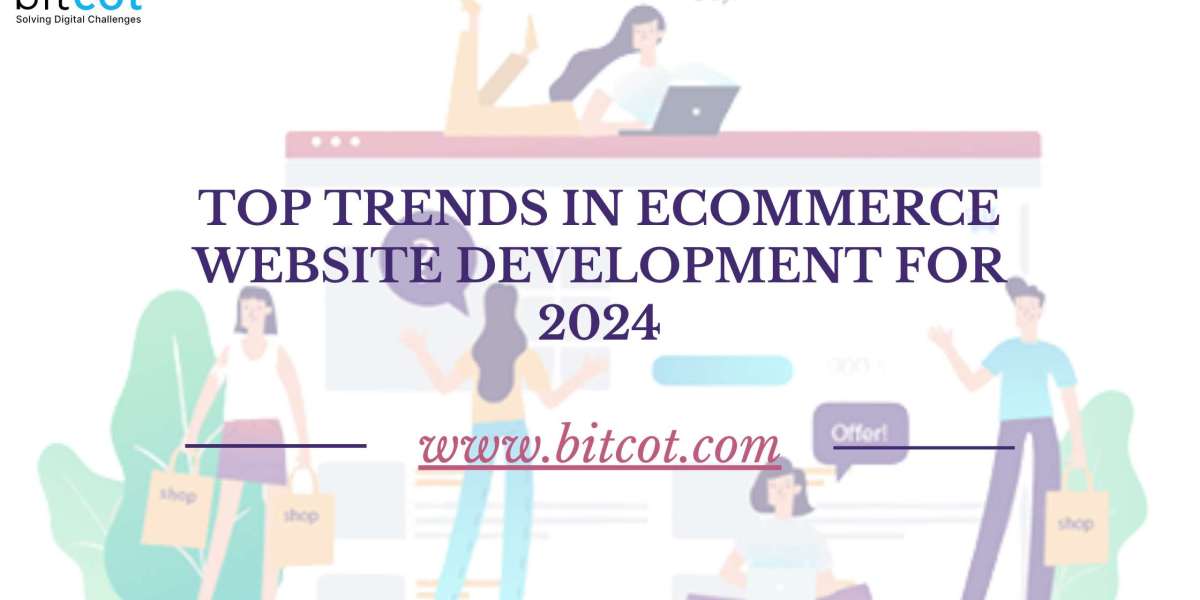As the eCommerce landscape continues to evolve, staying abreast of the latest trends is crucial for businesses aiming to maintain a competitive edge. In 2024, several key trends are shaping the way eCommerce websites are developed, enhancing user experience, boosting sales, and ensuring security. This blog explores the top trends in eCommerce website development that are set to dominate in 2024.
1. AI and Machine Learning Integration
Artificial intelligence (AI) and machine learning (ML) are revolutionizing eCommerce by offering personalized shopping experiences. These technologies analyze user behavior, preferences, and purchasing patterns to provide tailored product recommendations, predictive search results, and dynamic pricing strategies. AI chatbots are also becoming more sophisticated, providing instant customer support and improving overall customer satisfaction.
2. Augmented Reality (AR) and Virtual Reality (VR)
AR and VR are transforming the online shopping experience by allowing customers to visualize products in their real-world environment before making a purchase. For example, furniture retailers can use AR to let customers see how a piece of furniture would look in their home, while fashion brands can offer virtual try-ons. This immersive technology enhances user engagement and reduces return rates by helping customers make more informed decisions.
3. Voice Commerce
With the increasing popularity of smart speakers and voice assistants like Amazon Alexa and Google Assistant, voice commerce is on the rise. Integrating voice search capabilities into eCommerce websites allows customers to search for products, make purchases, and track orders using voice commands. This trend caters to the growing demand for hands-free, convenient shopping experiences.
4. Mobile-First Design
As mobile shopping continues to grow, adopting a mobile-first design approach is essential. In 2024, eCommerce websites are expected to prioritize mobile usability, ensuring that sites are responsive, load quickly, and provide a seamless experience on smaller screens. Progressive Web Apps (PWAs) are also gaining traction, offering an app-like experience without the need for downloading and installing apps from app stores.
5. Headless Commerce
Headless commerce decouples the front end and back end of eCommerce websites, allowing developers to use different technologies for each. This flexibility enables businesses to create highly customized and innovative user experiences across various touchpoints, such as web, mobile, and social media. Headless commerce also facilitates faster development and easier scalability.
6. Enhanced Payment Options
Offering multiple payment options is becoming increasingly important to cater to diverse customer preferences. In addition to traditional credit and debit cards, eCommerce websites are integrating digital wallets (like Apple Pay and Google Pay), buy now, pay later (BNPL) services (such as Afterpay and Klarna), and cryptocurrency payments. Providing a variety of secure and convenient payment methods can reduce cart abandonment rates and boost conversions.
7. Sustainability and Ethical Practices
Consumers are becoming more conscious of environmental and ethical issues, influencing their purchasing decisions. In 2024, eCommerce websites are expected to highlight sustainable practices, such as eco-friendly packaging, carbon-neutral shipping options, and ethically sourced products. Transparency about sustainability efforts can attract environmentally conscious consumers and build brand loyalty.
8. Advanced Analytics and Data Insights
Data-driven decision-making is crucial for optimizing eCommerce performance. Advanced analytics tools provide insights into customer behavior, sales trends, and marketing effectiveness. By leveraging these insights, businesses can refine their strategies, personalize marketing campaigns, and improve product offerings. Real-time analytics also enable quick responses to changing market conditions and customer preferences.
9. Cybersecurity and Data Privacy
With the rise in cyber threats, ensuring robust cybersecurity measures is paramount for eCommerce websites. Implementing secure payment gateways, encryption, and multi-factor authentication can protect customer data and build trust. Additionally, compliance with data privacy regulations, such as GDPR and CCPA, is essential to avoid legal repercussions and maintain customer confidence.
10. Subscription-Based Models
Subscription-based eCommerce models are gaining popularity across various industries, from beauty and fashion to food and beverages. These models offer a steady revenue stream and enhance customer loyalty by providing convenience and personalized product deliveries. Implementing a subscription service requires integrating features such as automated billing, customizable subscription plans, and flexible delivery options.
11. Social Commerce
Social media platforms are becoming powerful sales channels, with features like shoppable posts and in-app checkout options. Integrating social commerce into eCommerce websites enables businesses to reach a broader audience, leverage influencer marketing, and drive direct sales through social media. Ensuring a seamless transition from social media to the eCommerce site is key to maximizing this trend's potential.
12. Green Hosting and Eco-Friendly Web Development
As part of the broader sustainability trend, green hosting solutions are gaining traction. These services use renewable energy sources to power servers, reducing the carbon footprint of eCommerce websites. Additionally, eco-friendly web development practices, such as optimizing site performance and reducing data transfer, contribute to sustainability efforts.
Conclusion
The eCommerce industry is constantly evolving, driven by technological advancements and changing consumer preferences. By embracing these top trends in eCommerce website development for 2024, businesses can enhance user experiences, improve operational efficiency, and stay ahead of the competition. Whether it’s through AI integration, mobile-first design, or sustainable practices, staying informed and adaptable is key to thriving in the dynamic eCommerce landscape.
Also Read: 10 Best Web Development Languages for Your Project in 2024








